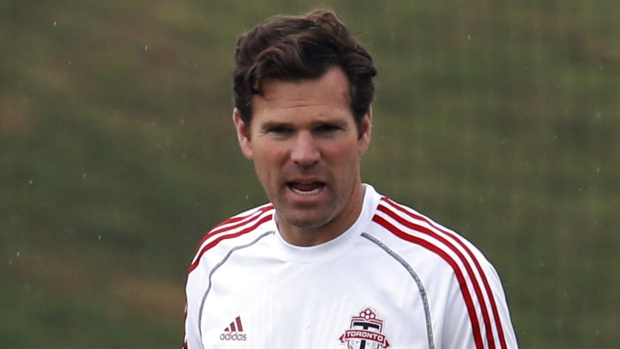Dec 18, 2014
Future plans for TFC hinge on short-term success
Toronto FC's presentation for its vision for the future on Thursday morning featured some good ideas, but all of this will be for naught if the first team continues to struggle. The execution of any long-term plan is entirely dependent on achieving short-term success.
By Jason deVos

On Thursday morning at Toronto FC’s Downsview training ground, members of the media sat down with the club’s management team to hear an outline of their vision for Toronto FC and its academy. On hand to explain the details were Tim Bezbatchenko, the team's general manager, Greg Vanney, TFC's head coach, Jim Liston, their head of sport science and Michael Rabasca, director of cognitive development.
If this all sounds vaguely familiar, there is a reason: it was the same strategy employed by Bezbatchenko’s predecessor, Kevin Payne, back in January of 2013.
“I’ve mentioned a few times – kind of every time I talk – about culture; that really was the first order of business. I really felt strongly that we needed to change the culture of the organization, particularly out here at the training ground,” said Payne at that meeting in early 2013.
“Good teams, if they do things right, can create a virtuous cycle. And bad teams tend to create a vicious cycle,” said Payne.
Well, Payne hit the nail on the head with that that last one. Over its eight-year history, TFC has created a vicious cycle - one in which the club stumbles from one terrible appointment to the next.
A quick look at the club’s recent history shows you just how often they’ve made a mess of things.
Let’s start with Jurgen Klinsmann, the “football consultant” hired to search the world over for the right man to take the club forward, only to come back with Aron Winter - a rookie head coach who knew nothing of MLS and was completely out of his depth.
Then there was Kevin Payne, the club’s American president and GM who thought the best way to symbolize what Toronto FC was all about was to erect an inukshuk – since he couldn’t think of a more clichéd symbol of what it means to be Canadian. Payne followed that up with the bizarre decision to hire Ryan Nelsen as his head coach. Nelsen was, at the time of his hiring, still a player with Queens Park Rangers in the English Premier League and had no coaching qualifications or experience.
When Tim Leiweke rode into Maple Leaf Sports and Entertainment on his white horse to save its three sports franchises, he jettisoned Payne in favour of rookie GM Bezbatchenko. Rather than giving his new GM the freedom to hire his own coach, Leiweke instead decided to shackle Bezbatchenko to Nelsen, insisting that Nelsen was the man to lead the charge on the “Bloody Big Deal” that was the signing of Jermain Defoe.
The relationship between Bezbatchenko and Nelsen was doomed to fail from the beginning and, when Bezbatchenko hired Vanney to be TFC’s assistant GM and academy director in December of 2013, Nelsen was looking over his shoulder at the man he knew would be his replacement. When the inevitable axe fell on Nelsen - with 10 games remaining in the 2014 season and TFC sitting in third place in the Eastern Conference – Vanney took over the reins. The team picked up just eight points from its remaining 10 games and finished in seventh place – outside the playoff picture for the eighth-consecutive season.
Toronto FC fans have seen and heard it all. The last thing they want to hear is yet another pronouncement that the club is “going in the right direction” and is “building the foundation of success for years to come."
That is a shame, because I liked a lot of what Vanney and his staff had to say on Thursday.
For starters, the club is finally taking its academy seriously. While it has been investing over $1 million a year in its academy, there was never the sense that there was a plan in place to systematically develop talented youngsters. That has changed under Vanney, who spent a lengthy amount of time on Thursday outlining the eight player development traits the club is looking to develop in its players, from the academy right through to the first team.
Vanney also outlined how the club’s USL Pro team will allow it to better aid players in making the transition from the academy to the first team or even to another development pathway, such as the NCAA or the CIS. Toronto FC aims to develop as many prospects as it can through its academy and, while it is an ambitious target, Bezbatchenko highlighted that the three-to-five-year plan is for the club to increase the number of academy graduates in its core roster to as many as nine players.
Liston and Rabasca discussed the roles of sport science and cognitive development in building future professional soccer players – areas that are often understaffed or even ignored at other clubs in Major League Soccer. With the resources provided by its parent company, MLSE, there are no excuses for TFC not to have the best academy set-up in the league.
But all of this will be for naught if the first team continues to struggle. The execution of any long-term plan is entirely dependent on achieving short-term success. That, in the form of a post-season playoff berth, has, thus far, proved to be an elusive thing for Toronto FC.
